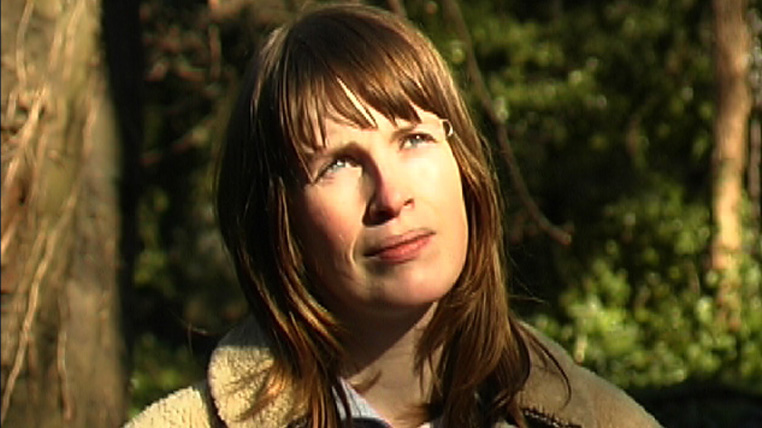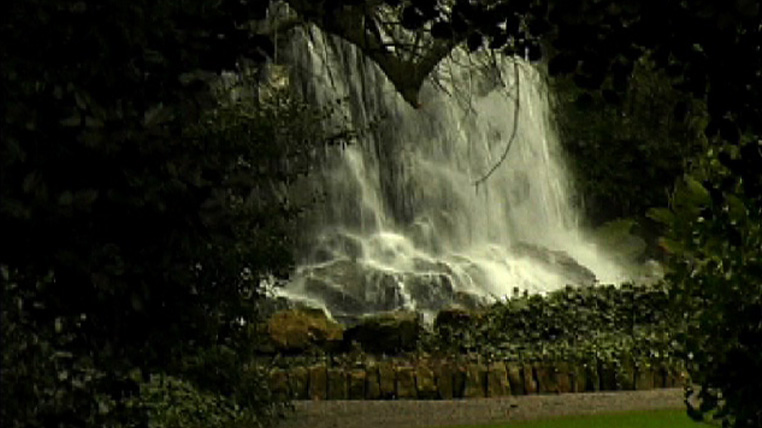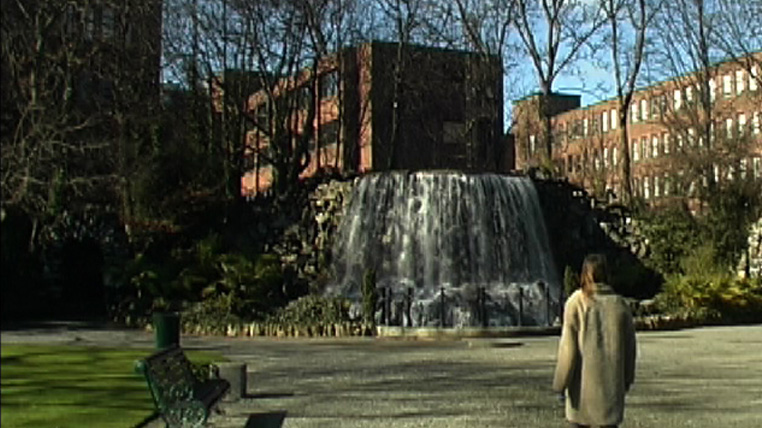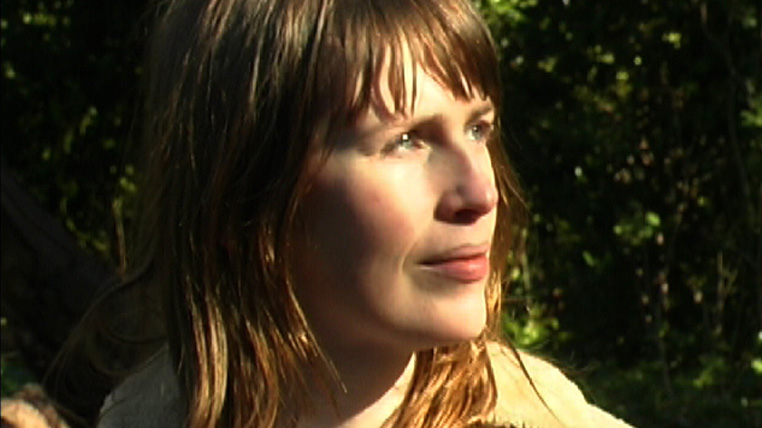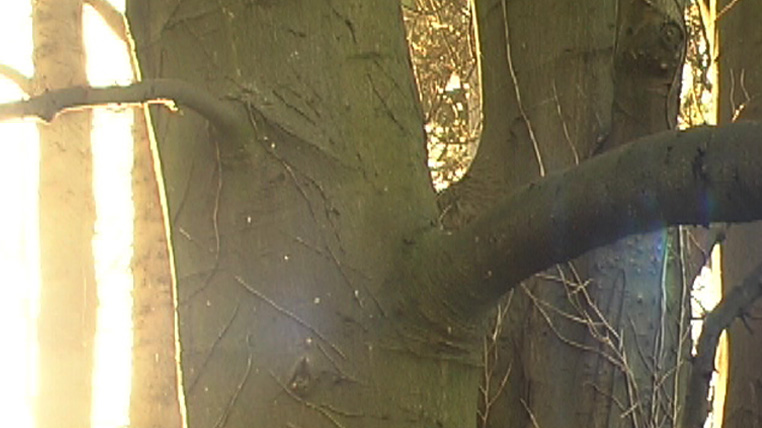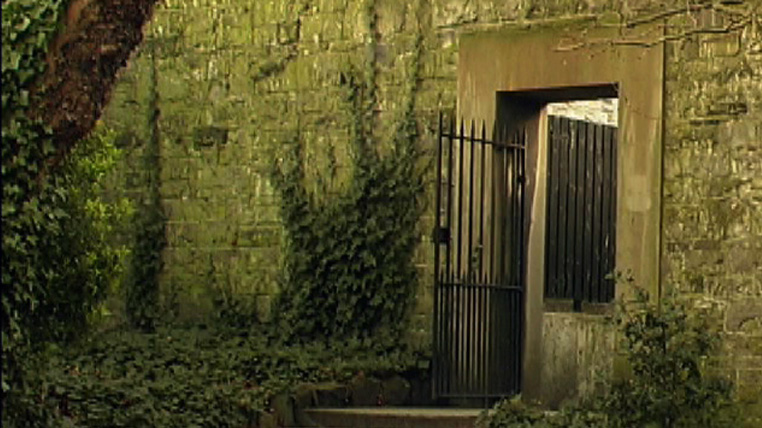
Folly
2003, Video, 6 minutes
Folly opens with a woman arriving at a city park. As she enters, the sun comes out, birds call and a fountain starts to play, as though her presence had activated the park. Passing the fountain, she stops to pause and throw a coin. As she continues to walk, she encounters dust floating in a strong light beam. Gazing at the phenomenon, she is temporarily blinded from looking too long at the sun. White light burns out the screen as the viewer simultaneously experiences the same sensation. As she wanders on and leaves through a gate, the sun goes in and the fountain stops.
“What the films propose is the mystery of vision and the interior reflection that comes with it, suggesting that it is the enigma of natural phenomenon is the place in which the marvellous ecstatic of the sublime can hide...these ambiguous perceptions originating from the senses are impregnated with a concrete experience and not by an ideal essence. The filmic images create intense silent movement, that gently unquiets the gaze of the viewer. This disquieting of the gaze slowly shifts to the dimension of thought; therefore we are inevitably invited to to reflect upon time, on its fragmentary flow of events. In her work space and time acquire a peculiar unity that culminate in a dynamic contemplation capable of bringing together the fragmentariness of perception and the pluarlity of experience. Another important aspect of Weir’s work is its capacity to create paradox, to subvert the logic that exists between the elements of the ‘real’. Yet there is no artifice, no invention outside the world, but rather elements taken out of their original context and given a new configuration. There is an internal, conceptual coherence which constantly reminds us that in life as in art the most essential elements are always time, space and light.”
Stella Scatterina, Flash Art, July-September 2003, No. 231
2003, Video, 6 minutes
Folly opens with a woman arriving at a city park. As she enters, the sun comes out, birds call and a fountain starts to play, as though her presence had activated the park. Passing the fountain, she stops to pause and throw a coin. As she continues to walk, she encounters dust floating in a strong light beam. Gazing at the phenomenon, she is temporarily blinded from looking too long at the sun. White light burns out the screen as the viewer simultaneously experiences the same sensation. As she wanders on and leaves through a gate, the sun goes in and the fountain stops.
“What the films propose is the mystery of vision and the interior reflection that comes with it, suggesting that it is the enigma of natural phenomenon is the place in which the marvellous ecstatic of the sublime can hide...these ambiguous perceptions originating from the senses are impregnated with a concrete experience and not by an ideal essence. The filmic images create intense silent movement, that gently unquiets the gaze of the viewer. This disquieting of the gaze slowly shifts to the dimension of thought; therefore we are inevitably invited to to reflect upon time, on its fragmentary flow of events. In her work space and time acquire a peculiar unity that culminate in a dynamic contemplation capable of bringing together the fragmentariness of perception and the pluarlity of experience. Another important aspect of Weir’s work is its capacity to create paradox, to subvert the logic that exists between the elements of the ‘real’. Yet there is no artifice, no invention outside the world, but rather elements taken out of their original context and given a new configuration. There is an internal, conceptual coherence which constantly reminds us that in life as in art the most essential elements are always time, space and light.”
Stella Scatterina, Flash Art, July-September 2003, No. 231
